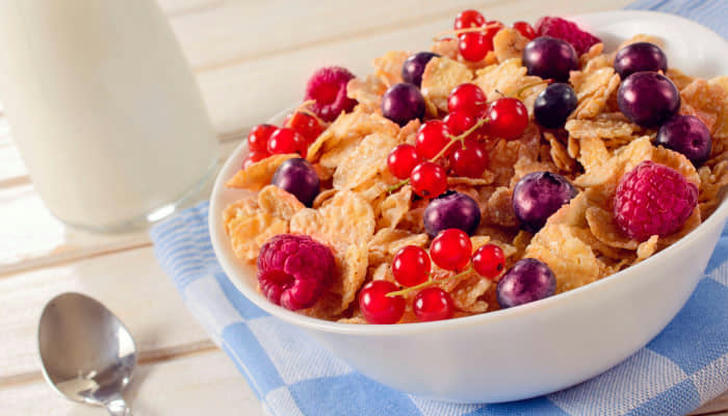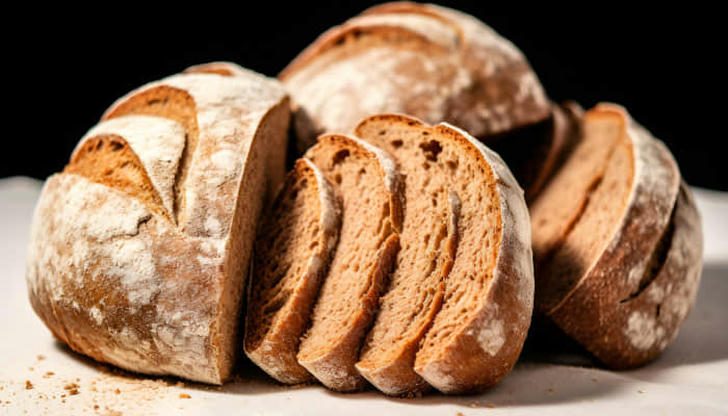10 Breakfast Mistakes To Avoid If You Have Diabetes
When you have diabetes, having a healthy breakfast is essential. It sets the stage for your day, helping to control blood sugar levels and how your body processes glucose. Making smart breakfast choices can prevent blood sugar spikes or crashes, which are critical for long-term health.
In this article, we'll explore 10 common breakfast mistakes that people with diabetes should avoid. These mistakes range from skipping breakfast altogether to unknowingly consuming excessive sugars. By understanding these mistakes and making healthier breakfast choices, individuals with diabetes can better manage their condition and improve their overall well-being.
Skipping Breakfast Altogether

Skipping breakfast can have a significant impact on blood sugar levels throughout the day. When you skip breakfast, your body may experience a drop in blood sugar, leading to fatigue, irritability, and difficulty concentrating. For individuals with diabetes, this can disrupt glucose management and make it challenging to maintain stable blood sugar levels.
Starting the day with a balanced meal is crucial for diabetes management. A nutritious breakfast helps kickstart your metabolism, regulates blood sugar levels, and provides sustained energy. Incorporating protein, healthy fats, and complex carbohydrates into your breakfast can support better blood sugar control and overall health.
Consuming High-Sugar Breakfast Cereals

Many breakfast cereals contain hidden sugars that can spike blood sugar levels. These added sugars are often disguised under names like high-fructose corn syrup, cane sugar, or maltose. Consuming high-sugar cereals can lead to rapid blood sugar spikes, followed by crashes, which can be problematic for individuals with diabetes.
Opting for alternatives to high-sugar cereals is essential for a diabetes-friendly breakfast. Look for whole-grain or low-sugar cereal options that are high in fiber and low in added sugars. Adding fresh fruits or nuts to your cereal can enhance flavor and nutritional value without compromising blood sugar control.
Overindulging in Fruit Juices

Fruit juices, while perceived as healthy, can be high in sugar and calories. The process of juicing removes fiber, leading to a concentrated source of sugars that can cause rapid spikes in blood glucose levels. Overindulging in fruit juices can disrupt blood sugar management and contribute to weight gain.
Consider healthier alternatives such as whole fruits or low-sugar fruit options. Whole fruits provide fiber, vitamins, and minerals while having a lower impact on blood sugar compared to fruit juices. Opt for fresh fruits, unsweetened fruit juices, or diluted fruit juices to reduce sugar intake and support better blood sugar control.
Not Including Protein in Breakfast

Protein plays a crucial role in stabilizing blood sugar levels, especially in the morning. Including protein in your breakfast can help prevent rapid spikes in blood glucose and promote satiety, reducing the risk of overeating later in the day. For individuals with diabetes, incorporating protein-rich foods into breakfast is essential for better glucose management.
There are various protein-rich breakfast options suitable for individuals with diabetes. Examples include eggs, Greek yogurt, lean meats like turkey or chicken, tofu, and nuts. These foods not only provide protein but also offer essential nutrients to support overall health and blood sugar control.
Relying Too Much on Processed Foods

Processed foods, such as sugary cereals, pastries, and packaged breakfast items, can have detrimental effects on blood sugar levels. These foods are often high in added sugars, unhealthy fats, and refined carbohydrates, leading to rapid spikes and crashes in blood glucose. Over time, frequent consumption of processed foods can contribute to insulin resistance and worsen diabetes management.
Opting for whole, unprocessed foods is a healthier choice for breakfast, especially for individuals with diabetes. Whole foods like fruits, vegetables, whole grains, and lean proteins provide essential nutrients, fiber, and slower-digesting carbohydrates that support stable blood sugar levels. Incorporating homemade meals and minimizing processed food intake can improve overall health outcomes.
Ignoring Portion Control

Proper portion control is vital for managing diabetes and preventing blood sugar fluctuations. Eating oversized portions, even if of healthy foods, can lead to excess calorie intake and challenges in glucose management. It's important to be mindful of portion sizes, especially at breakfast, to maintain steady blood sugar levels throughout the day.
Tips for practicing portion control at breakfast include using smaller plates or bowls, measuring food portions, and being aware of serving sizes recommended for individuals with diabetes. Balancing carbohydrates, proteins, and fats in appropriate portions can help optimize blood sugar control and support overall well-being.
Lack of Fiber in Breakfast

Fiber plays a crucial role in blood sugar regulation as it slows down the absorption of glucose, preventing sudden spikes. Including fiber-rich foods in breakfast can improve satiety, aid digestion, and contribute to overall better blood sugar control. For individuals with diabetes, prioritizing fiber intake at breakfast is essential for managing their condition effectively.
To incorporate more fiber into breakfast, consider adding foods like whole grains, fruits, vegetables, legumes, and nuts. These foods are not only rich in fiber but also provide a range of vitamins, minerals, and antioxidants beneficial for overall health.
Not Paying Attention to Glycemic Index

The glycemic index (GI) measures how quickly carbohydrates in foods raise blood sugar levels. Foods with a high GI can cause rapid spikes in blood glucose, while low GI foods lead to more gradual increases. Understanding the GI of foods can help individuals with diabetes make informed choices to better control their blood sugar levels.
It's recommended to include more low glycemic index foods in breakfast for a diabetes-friendly meal. Examples of low GI foods include non-starchy vegetables, whole grains like oats and barley, legumes, and most fruits. These choices can help maintain more stable blood sugar levels throughout the day.
Skipping Breakfast Planning

Meal planning is essential for individuals with diabetes to ensure they make healthy food choices and avoid common pitfalls. Skipping breakfast planning can lead to haphazard food choices, increased risk of consuming high-sugar or processed foods, and difficulties in managing blood sugar levels.
Effective breakfast planning involves preparing balanced meals that include a variety of nutrient-rich foods. It's important to consider portion sizes, carbohydrate content, fiber intake, and overall nutritional balance. Taking the time to plan ahead can help individuals with diabetes enjoy satisfying and blood sugar-friendly breakfasts.
